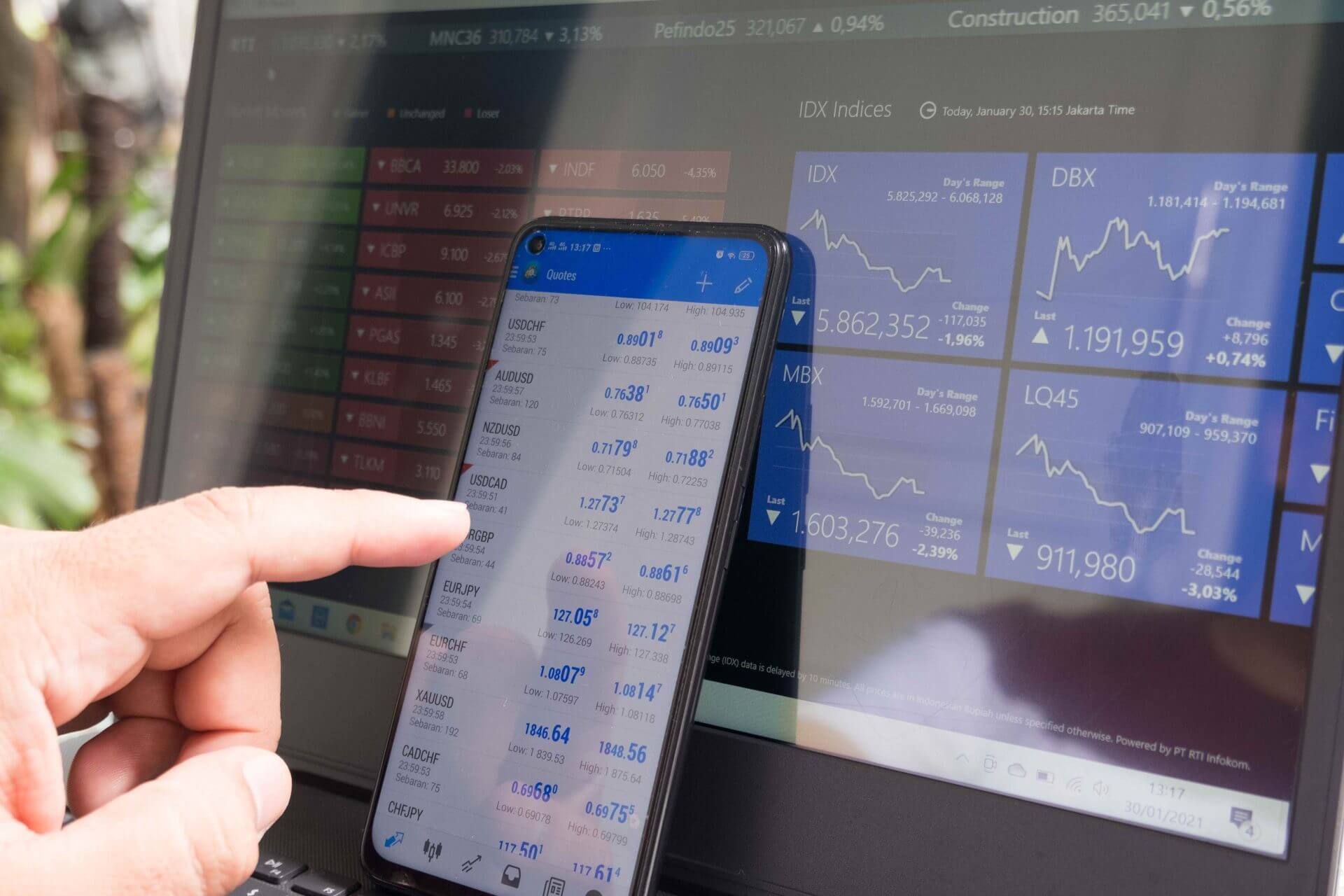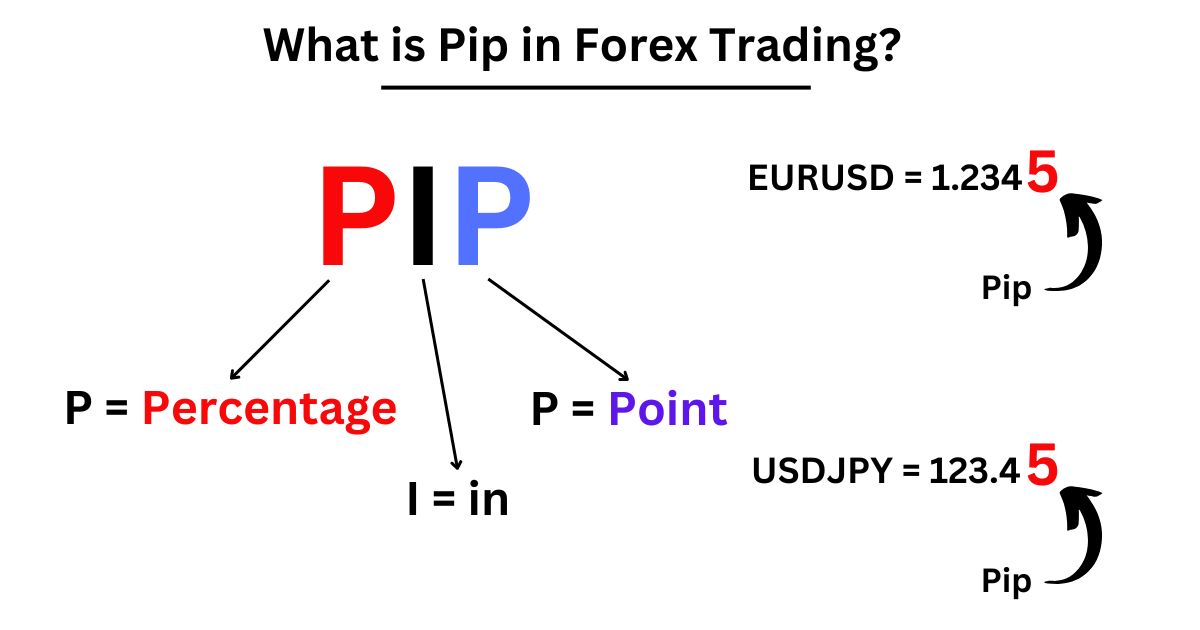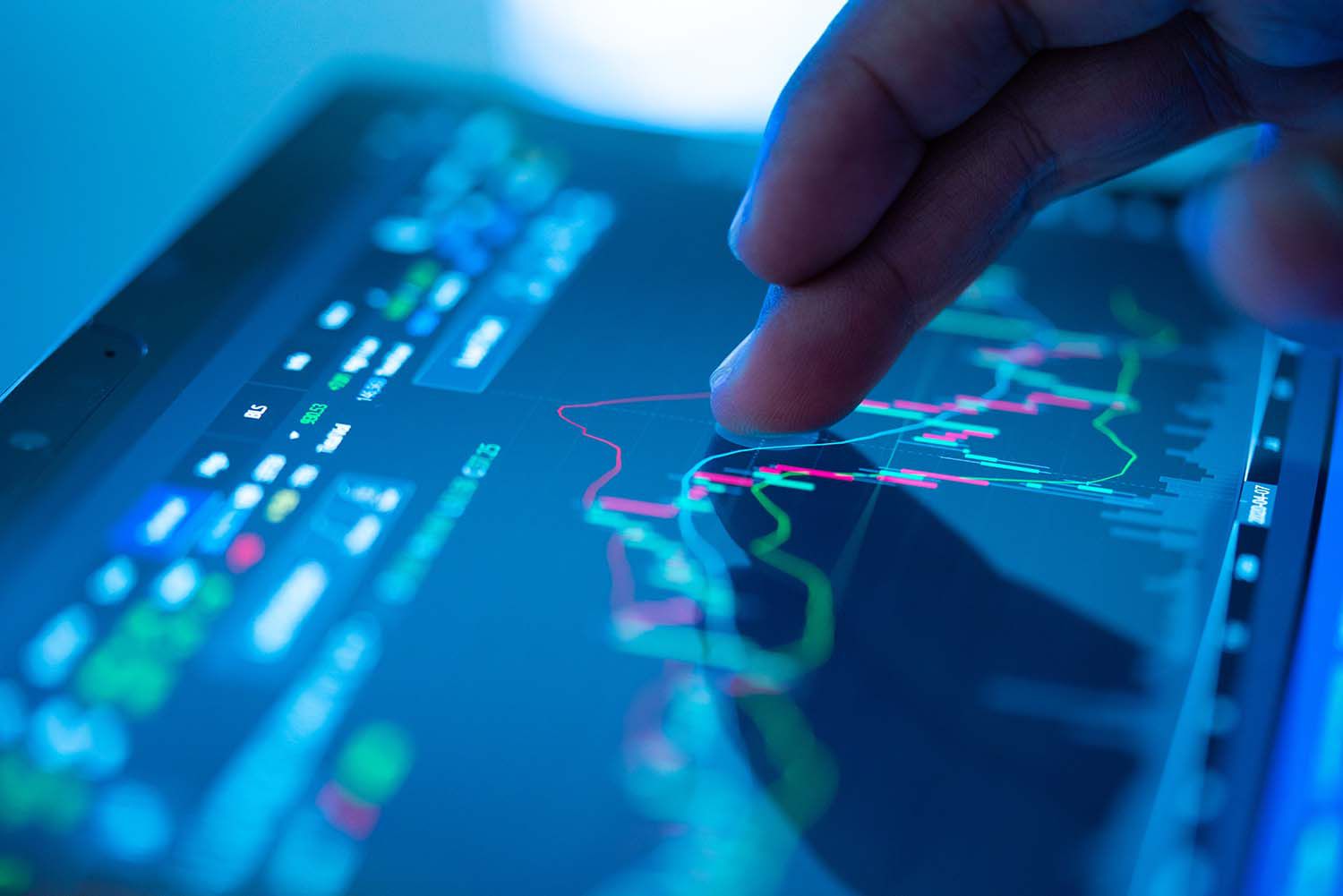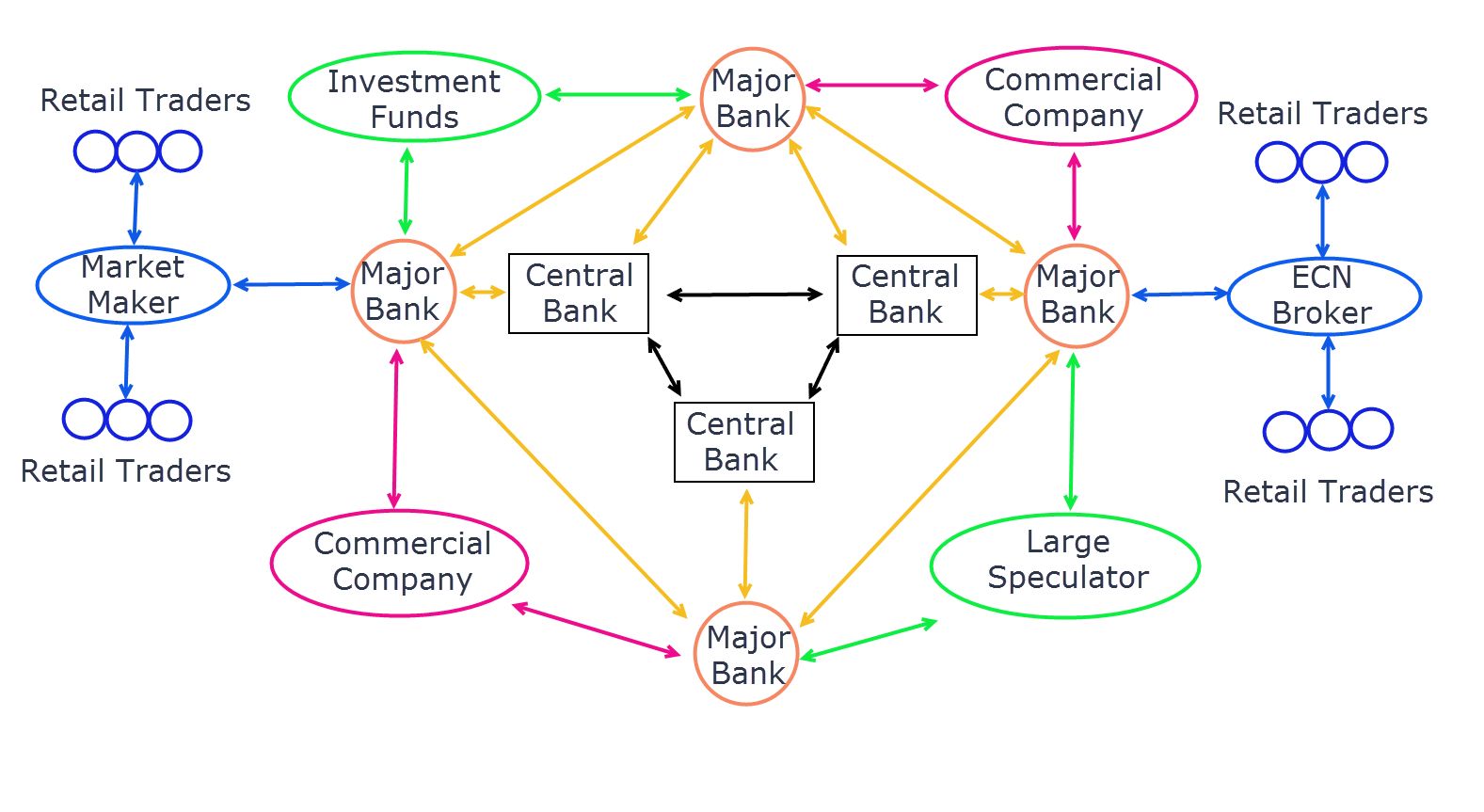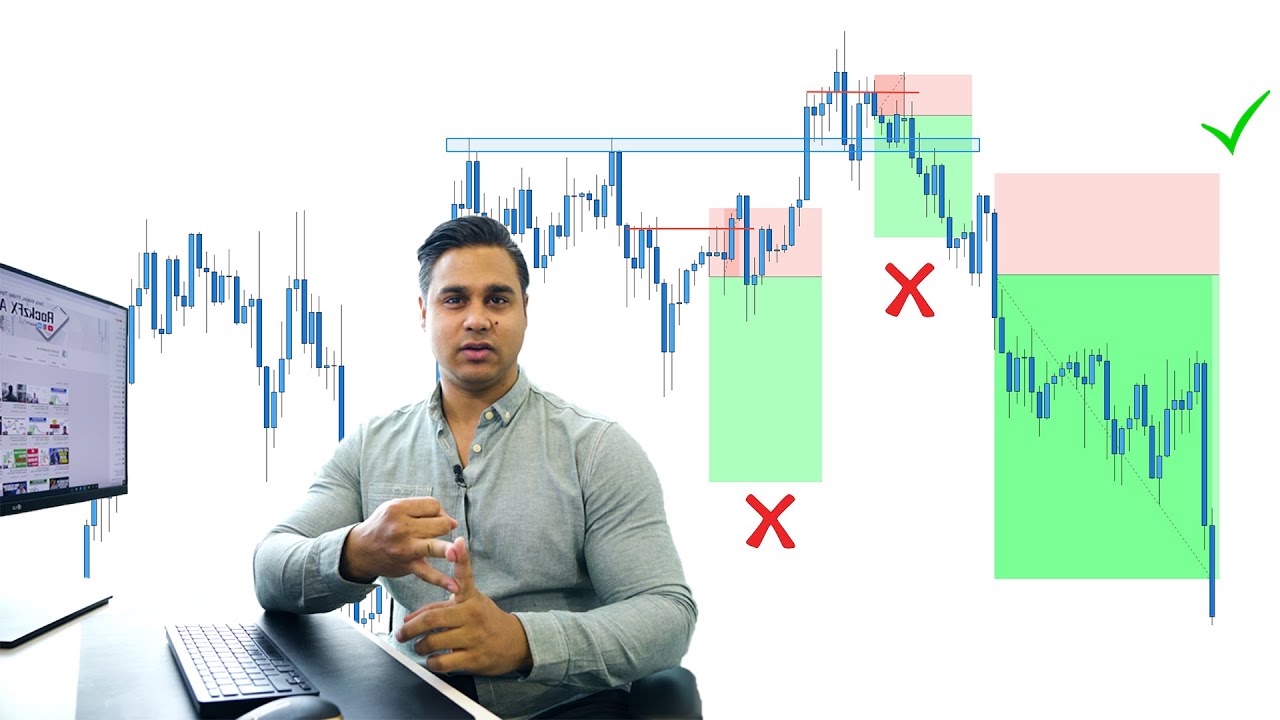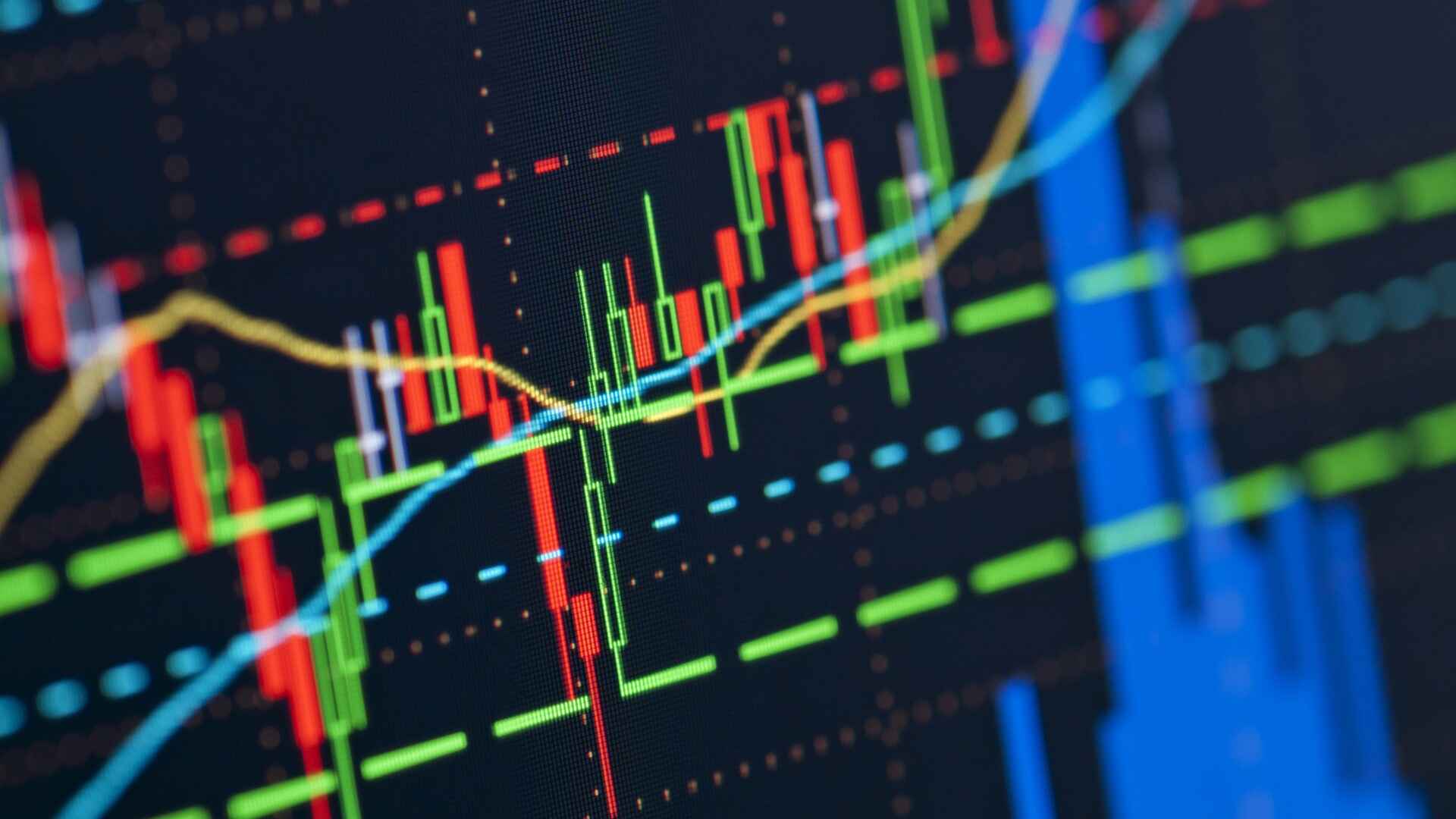Introduction
Forex trading is a highly lucrative and accessible financial market that allows individuals to trade different currencies and potentially profit from the fluctuations in their exchange rates. If you’re interested in exploring this exciting opportunity, the first step is to open a forex trading account. Opening a forex trading account may seem daunting at first, but it’s actually a straightforward process that can be completed in just a few steps.
In this article, we will guide you through the process of opening a forex trading account, from researching forex brokers to placing your first trade. Whether you’re a seasoned trader looking to switch brokers or a beginner taking your first steps into the forex market, this guide will provide you with the necessary information to get started.
Before we dive into the specifics, it’s important to understand that choosing the right forex broker is crucial for a successful trading experience. A forex broker acts as a middleman between you and the market, providing you with a trading platform, tools, and access to various currency pairs. Therefore, conducting thorough research on different brokers is essential to ensure you find a reputable, reliable, and regulated company.
Additionally, it’s crucial to identify your trading goals and experience level, as this will help you choose the most suitable account type. Forex brokers typically offer different account types, such as standard accounts, mini accounts, and micro accounts, each with its own minimum deposit requirements, leverage options, and trading conditions.
Once you’ve selected your preferred forex broker and account type, you’ll need to complete the registration process. This usually involves providing your personal information, such as your name, address, and contact details. Some brokers may also require you to provide additional documents to verify your identity and comply with anti-money laundering regulations.
After successfully registering your account, you’ll need to fund it. Most brokers offer multiple funding options, including bank transfers, credit/debit cards, and online payment processors. It’s important to choose a method that suits your preferences and is secure and convenient. Keep in mind that some brokers may require a minimum deposit, so ensure you have sufficient funds to begin trading.
Once your account is funded, you’ll need to select a trading platform. Trading platforms come in different forms, including web-based platforms, desktop applications, and mobile apps. It’s essential to choose a platform that is user-friendly and offers the necessary tools and features you require for effective trading.
Step 1: Researching Forex Brokers
The first step in opening a forex trading account is to thoroughly research forex brokers. With numerous brokers available in the market, it’s crucial to choose a reputable and reliable broker that aligns with your trading goals and preferences. Here are some essential factors to consider during your research:
- Regulation: Ensure that the broker is regulated by a reputable financial authority, such as the Financial Conduct Authority (FCA) in the UK or the Securities and Exchange Commission (SEC) in the United States. Regulation provides you with protection and ensures that the broker operates in a transparent and fair manner.
- Trading Costs: Compare the spreads, commissions, and fees charged by different brokers. Lower trading costs can significantly impact your profits, so it’s important to find a broker with competitive pricing.
- Trading Platforms: Evaluate the trading platforms offered by brokers. Look for platforms that are intuitive, reliable, and offer advanced charting tools and analysis capabilities. Popular platforms include MetaTrader 4 (MT4) and MetaTrader 5 (MT5).
- Customer Support: Consider the quality of customer support provided by the broker. Check if they offer multiple support channels, such as live chat, telephone, and email, and ensure that they have a responsive and knowledgeable support team.
- Account Types: Assess the different account types offered by brokers and identify one that suits your trading style and budget. Some brokers offer demo accounts, which allow you to practice trading with virtual money before risking your own funds.
- Education and Research: Look for brokers that provide educational resources, market analysis, and research tools to help you enhance your trading skills. This can be particularly beneficial for beginners seeking to expand their knowledge.
- Deposit and Withdrawal Options: Check the available deposit and withdrawal methods supported by the broker. Ensure that they offer convenient and secure options that suit your needs.
By conducting thorough research and considering these factors, you can narrow down your options and choose the forex broker that best suits your requirements. It may take some time and effort, but selecting the right broker is crucial for a successful trading experience. Remember, this is just the first step in opening a forex trading account, so take your time to make an informed decision.
Step 2: Choosing the Right Account Type
After researching and selecting a reputable forex broker, the next step in opening a forex trading account is to choose the right account type. Forex brokers typically offer different types of accounts, each catering to different trading needs and experience levels. Here are some factors to consider when choosing the right account type:
- Minimum Deposit: Different account types may have varying minimum deposit requirements. Consider your budget and trading capital to determine which account type aligns with your financial capabilities.
- Leverage Options: Leverage allows traders to control larger positions with a smaller amount of capital. Evaluate the leverage options offered by brokers and choose one that suits your risk appetite and trading strategy. However, remember that higher leverage also increases the risk of potential losses.
- Trading Conditions: Assess the trading conditions offered for each account type, such as spreads, commissions, and execution speed. Compare these factors and choose an account type that provides favorable conditions for your trading preferences.
- Account Features: Different account types may offer additional features, such as access to exclusive educational resources, personal account managers, or VIP customer support. Determine if these features are important to you and select an account type that meets your needs.
- Scalability: Consider your trading goals and whether the chosen account type allows for growth and scalability. If you plan to increase your trading volume in the future, it’s important to choose an account type that accommodates your future trading needs.
- Specialty Accounts: Some brokers offer specialty accounts designed for specific trading styles, such as Islamic accounts that comply with Sharia law or professional accounts for experienced traders. If you have specific requirements, explore if any specialty accounts are available.
Keep in mind that most brokers offer a demo account option. This allows you to practice trading with virtual funds and get familiar with the broker’s trading platform and features before committing real money. Using a demo account can be valuable, especially for beginners who are still learning the ropes of forex trading.
By carefully considering the factors mentioned above, you can choose the right account type that aligns with your trading goals, risk tolerance, and financial situation. Remember, selecting the appropriate account type is an important step in opening a forex trading account, as it can impact your trading experience and overall success in the forex market.
Step 3: Completing the Registration Process
Once you have chosen the forex broker and the account type that suits your trading needs, it’s time to complete the registration process to open your forex trading account. This process typically involves providing your personal information and agreeing to the broker’s terms and conditions. Here are the steps to complete the registration process:
- Visit the Broker’s Website: Go to the broker’s website and look for the “Sign Up” or “Open Account” button. Click on it to initiate the registration process.
- Fill in Your Personal Information: You will be required to provide your personal details, such as your full name, residential address, email address, and phone number. Ensure that you enter accurate information as it will be used for account verification and further communication.
- Create a Login and Password: Choose a username and password that you will use to access your trading account. Make sure the password is strong and unique to protect your account from unauthorized access.
- Read and Agree to the Terms and Conditions: Carefully read the broker’s terms and conditions, as well as any other legal documentation, such as the risk disclosure statement. Make sure you understand the rules, regulations, and responsibilities associated with trading with the broker.
- Submit Your Registration: Once you have reviewed all the information and agreed to the terms and conditions, submit your registration. The broker may send you a confirmation email with further instructions.
During the registration process, some brokers may ask you to choose the base currency for your trading account. It’s advisable to select a currency that is convenient for your financial transactions and aligns with your trading goals.
After completing the registration process, you will usually have access to a client portal or dashboard provided by the broker. This portal allows you to manage your account, deposit/withdraw funds, and access trading platforms and other tools.
It’s important to remember that during the registration process, you may be required to undergo a verification process to comply with anti-money laundering (AML) regulations. This typically involves providing supporting documents, such as a copy of your identification card or passport, proof of address, and sometimes additional information depending on the broker’s requirements. Ensure that you have these documents ready to expedite the verification process.
By completing the registration process, you are one step closer to starting your forex trading journey. Once your account is approved and verified, you can proceed to the next steps, such as funding your account and familiarizing yourself with the trading platform and tools provided by your chosen broker.
Step 4: Verifying Your Identity
Once you have completed the registration process with your chosen forex broker, the next step is to verify your identity. Identity verification is a crucial step in the account opening process, as it ensures compliance with anti-money laundering (AML) regulations and helps protect the integrity of the financial system. Here’s what you need to know about verifying your identity:
Why is Identity Verification Necessary?
Identity verification is required by regulatory authorities to prevent fraud, money laundering, and other illicit activities. By verifying your identity, the broker can confirm that you are who you claim to be and comply with legal and regulatory requirements.
What Documents Might Be Required?
The specific documents required for identity verification may vary depending on the broker and the jurisdiction they operate in. Commonly requested documents include:
- Proof of Identity: This usually includes a valid government-issued identification document such as a passport, driver’s license, or national ID card. Ensure that the document is current and not expired.
- Proof of Address: This can be a recent utility bill, bank statement, or government-issued document that clearly displays your full name and residential address. The document should not be more than three months old.
- Additional Documentation: Depending on the broker’s requirements, you may be asked to provide additional documents such as proof of income, source of funds, or a selfie with your identification document.
How to Submit your Documents?
Most brokers provide a secure and user-friendly method for submitting verification documents. This can typically be done through their online client portal. You may be required to scan or photograph the documents and upload them directly to the platform. Alternatively, some brokers may allow you to submit documents via email or through their mobile app.
Verification Process Timeframe
The time it takes to complete the verification process can vary depending on the broker and the volume of applications they are processing. In some cases, verification can be completed within a few hours, while in others, it may take a few days. It’s important to be patient during this process and ensure that you have submitted all required documents accurately to avoid unnecessary delays.
Importance of Data Security
During the identity verification process, it’s crucial to prioritize data security. Only submit your documents through secure channels provided by the broker and ensure that you are using a secure internet connection. Additionally, be cautious of any suspicious emails or calls claiming to be from your broker and requesting personal information. Legitimate brokers will never ask you to provide sensitive information through unsecured means.
By successfully completing the identity verification process, you will have fulfilled an important step in opening your forex trading account. Once your identity is verified, you can proceed with funding your account and start exploring the world of forex trading.
Step 5: Funding Your Account
Once you have completed the registration and identity verification process, it’s time to fund your forex trading account. Funding your account is an essential step that allows you to deposit the necessary capital to start trading. Here’s what you need to know about funding your account:
Choose Your Funding Method:
Forex brokers typically offer various funding methods to suit your preferences. Common options include bank transfers, credit/debit cards, e-wallets, and online payment processors. Choose a funding method that is convenient, secure, and offers reasonable processing times. Keep in mind that some funding methods may come with additional fees or limitations, so it’s essential to check with the broker beforehand.
Minimum Deposit Requirements:
Different brokers may have varying minimum deposit requirements. Ensure that you are aware of the minimum deposit amount for your chosen account type and have sufficient funds to meet this requirement. It’s important to note that the minimum deposit is just a starting point, and you may need to add more funds later to effectively manage your trades and account.
Consider Currency Conversion Costs:
If your trading account is denominated in a currency different from your funding source, you may incur currency conversion costs. These costs can impact your overall trading expenses, so it’s advisable to consider the exchange rates and the associated fees when funding your account. Some brokers offer the option to fund your account in multiple currencies to minimize conversion costs.
Security and Safety:
When funding your account, it’s essential to prioritize security and safety. Ensure that the broker’s website and payment portal have secure encryption protocols (such as SSL) in place to protect your personal and financial information. Additionally, be cautious of any phishing attempts or fraudulent websites by double-checking the website URL and avoiding clicking on suspicious links.
Keep Track of Your Transactions:
Maintain a record of your funding transactions, including the date, amount, and method used. This will help you track your deposits and withdrawals and assist with any future accounting or tax requirements. Many brokers provide transaction histories and account statements within their client portals, making it easier to keep track of your financial activities.
By funding your forex trading account, you will have the necessary capital to start engaging in the forex market. Ensure that you have allocated sufficient funds based on your trading strategy, risk tolerance, and account requirements. Remember, responsible money management is key to long-term success in forex trading, so always trade within your means and avoid overextending your finances.
Step 6: Selecting Your Trading Platform
Choosing the right trading platform is a crucial step in the process of opening a forex trading account. The trading platform serves as your gateway to the forex market, providing you with access to real-time market data, charts, trading tools, and order execution capabilities. Here’s what you need to consider when selecting your trading platform:
User-Friendly Interface:
Look for a trading platform that has an intuitive and user-friendly interface. It should be easy to navigate, with clear and concise menus and tools. The platform should also display real-time market data and updates in a visually appealing and understandable manner.
Compatibility and Accessibility:
Consider the compatibility and accessibility of the trading platform. Many brokers offer web-based platforms that can be accessed from any computer with an internet connection. There are also desktop applications and mobile apps available for trading on the go. Choose a platform that is compatible with your devices and operating systems to ensure seamless and convenient access to the market.
Advanced Charting and Analysis Tools:
Look for a trading platform that offers advanced charting capabilities and a wide range of technical analysis tools. The platform should allow you to analyze price patterns, apply indicators, draw trend lines, and perform other essential analysis techniques. The availability of these tools can greatly enhance your trading decisions.
Order Execution and Trade Management:
Evaluate the order execution speed and trade management features of the trading platform. It should provide quick and efficient execution of your trades, with the ability to easily modify or close positions. The platform should also offer various order types, such as market orders, limit orders, and stop orders, to suit your trading strategies.
Availability of Automated Trading:
If you are interested in automated trading, ensure that the trading platform supports this feature. Look for platforms that offer compatibility with expert advisors (EAs) or allow you to develop and implement your own automated trading strategies. This can be a valuable tool for traders who prefer algorithmic or systematic trading approaches.
Reliability and Stability:
A reliable and stable trading platform is essential for seamless trading operations. Look for platforms that have a track record of stability and uptime, as well as those backed by reputable technology providers. A platform with frequent downtime or technical issues can negatively impact your trading experience.
Additional Features:
Consider any additional features offered by the trading platform. This could include real-time news feeds, economic calendars, trade sentiment indicators, or social trading capabilities. These features can provide valuable insights and enhance your trading decisions.
By carefully selecting a trading platform that meets your requirements, you can have a smooth and efficient trading experience. Take the time to explore different platforms, test their features, and consider any additional tools or functionalities that can assist you in your trading journey. Remember, finding the right trading platform is an important step towards achieving success in the forex market.
Step 7: Familiarizing Yourself with the Trading Tools
Once you have selected a trading platform for your forex trading account, the next step is to familiarize yourself with the various trading tools available. These tools are designed to assist you in analyzing the market, making informed trading decisions, and managing your trades effectively. Here’s what you need to know about familiarizing yourself with the trading tools:
Market Analysis Tools:
Take the time to explore the market analysis tools provided by your trading platform. These tools can include technical indicators, chart patterns, trend lines, and economic calendars. Understanding how to use these tools will help you analyze market trends and make informed trading decisions based on technical and fundamental analysis.
Order Types and Trade Management:
Make sure you understand the different order types available on your trading platform. This can include market orders, limit orders, stop orders, and trailing stop orders. Knowing when and how to use these order types will allow you to effectively manage your trades, set profit targets, and control risk.
Risk Management Tools:
Take advantage of the risk management tools provided by your trading platform. These tools can include position sizing calculators, risk-reward calculators, and stop-loss orders. Understanding how to use these tools will help you manage your risk and protect your capital while trading.
Trade Execution and Analysis:
Practice executing trades on your trading platform to familiarize yourself with the order execution process. This can include placing market orders, setting stop-loss and take-profit levels, and modifying or closing trades. Additionally, explore the trade history and analysis tools provided by the platform to review past trades and assess your trading performance.
Backtesting and Strategy Development:
If your trading platform offers backtesting capabilities, take advantage of this feature to test and refine your trading strategies. Backtesting allows you to assess the performance of your trading strategies based on historical data. Additionally, consider any strategy development tools offered by the platform, allowing you to develop and optimize your own trading strategies.
Learning Resources:
Many trading platforms provide educational resources, tutorials, and webinars to help you make the most of their trading tools. Take the time to explore these resources and enhance your knowledge of the platform’s features. Additionally, consider joining online forums or communities where you can exchange ideas and learn from other traders using the same platform.
By familiarizing yourself with the trading tools available on your chosen platform, you will gain confidence in navigating the platform and utilizing its features effectively. Take the time to practice using these tools and incorporate them into your trading strategy. Remember, the more you understand and utilize the trading tools, the better equipped you will be to make informed trading decisions and manage your trades successfully.
Step 8: Placing Your First Trade
Placing your first trade is an exciting and pivotal moment in your forex trading journey. It’s the culmination of all the knowledge and preparation you have acquired thus far. Here’s what you need to know when it comes to placing your first trade:
Market Analysis:
Before placing a trade, conduct a thorough analysis of the market. Use the tools and indicators available on your trading platform to assess market trends, identify support and resistance levels, and determine potential entry and exit points. Consider both technical and fundamental factors that can impact the currency pair you intend to trade.
Define Your Trading Strategy:
Have a clear trading strategy in mind before placing your first trade. This strategy should outline your risk tolerance, profit targets, and the criteria for entering and exiting trades. Whether you prefer trend trading, breakout trading, or other strategies, make sure you have a well-defined plan in place.
Set Risk Management Parameters:
Determine your risk tolerance and set appropriate risk management parameters. This can include setting a stop-loss order to limit potential losses and defining a suitable position size based on your account balance and risk appetite. Remember, effective risk management is essential for long-term success in forex trading.
Execution of the Trade:
Once you have conducted your analysis and defined your strategy, it’s time to execute the trade. On your trading platform, select the currency pair you wish to trade and choose the appropriate order type (market order, limit order, or stop order) based on your strategy. Enter the desired trade parameters, including position size and stop-loss/take-profit levels, and confirm the trade.
Monitor and Manage the Trade:
After placing your trade, closely monitor its progress. Stick to your trading plan and avoid making impulsive decisions based on short-term market movements. Maintain discipline and be patient as the trade unfolds. Continuously assess the market conditions and adjust your stop-loss and take-profit levels if necessary.
Learn from Each Trade:
Regardless of the outcome, treat each trade as a learning opportunity. Analyze the results of your trade and evaluate the effectiveness of your analysis and strategy. Learn from both your successful trades and any losses you may incur. Continuously refine your approach and adjust your trading strategy based on real-time feedback from the market.
Seek Guidance and Support:
If you are unsure or have questions about placing your first trade, reach out to your broker’s customer support or consult with experienced traders. Don’t hesitate to seek guidance and support as you gain confidence and experience in trading.
By following these steps and placing your first trade, you will embark on a journey of continuous learning and improvement in the forex market. Remember, the key to success is consistent practice, disciplined execution of your trading plan, and continuous adaptation to changing market conditions.
Step 9: Managing and Monitoring Your Account
Managing and monitoring your forex trading account is essential for long-term success in the market. It involves actively overseeing your trades, adjusting your strategies, and ensuring proper risk management. Here are some key points to consider when managing and monitoring your account:
Regular Account Review:
Set aside time to review your trading account on a regular basis. Analyze your trades, track your performance, and assess the effectiveness of your trading strategies. This review process will help you identify areas where improvements can be made and make informed decisions for future trades.
Stay Informed:
Keep yourself updated with the latest market news, economic events, and geopolitical developments that can impact currency movements. Utilize the resources provided by your broker, such as real-time news feeds and economic calendars, or external sources like financial news websites or trading forums. Staying informed allows you to adjust your strategies based on changing market conditions.
Risk Management:
Adhere to solid risk management principles to protect your trading account. Set appropriate stop-loss levels for each trade and adjust them if needed. Avoid overexposing your account to a single trade and diversify your portfolio to minimize risks. Continuously evaluate and adjust risk management parameters as market conditions evolve.
Plan Your Trades:
Create a trading plan for each trade you take. Define your entry and exit criteria, profit targets, and risk-reward ratios. Stick to your plan and avoid making impulsive and emotional trading decisions. Having a well-defined plan in place will help you stay disciplined and consistent in your trading approach.
Monitor Positions:
Regularly monitor your open positions and adjust your strategy if required. Keep a close eye on market movements and news that may impact your trades. Consider trailing stops to protect profits and adjust your take-profit levels as the trade progresses. This ongoing monitoring will help you make real-time decisions based on market trends.
Assess Trading Performance:
Consistently evaluate your trading performance to identify strengths and weaknesses. Analyze the profitability of your trades, win rates, and average risk-to-reward ratios. This assessment will provide valuable insights that can guide your future trading decisions and help you refine your strategies.
Keep Records:
Maintain accurate and detailed records of your trades. Document entry and exit points, trade sizes, stop-loss and take-profit levels, and any annotations or observations you made during the trade. This record-keeping will assist you in analyzing your trading performance, spotting patterns, and learning from past trades.
By actively managing and monitoring your trading account, you can adapt to market conditions, minimize risks, and maximize the profitability of your trades. Remember, trading is an ongoing process of self-improvement, so continuously strive to enhance your skills and refine your strategies based on real-time feedback from the market.
Step 10: Withdrawing Funds from Your Account
Withdrawing funds from your forex trading account is an important step for managing your profits or managing your capital. Here’s what you need to know about withdrawing funds from your account:
Account Verification:
Before initiating a withdrawal, ensure that your trading account is fully verified. Some brokers may require additional documentation or identity verification to comply with regulatory requirements before allowing withdrawals. Ensure that you have provided all the necessary information and completed any requested verification processes.
Review Withdrawal Policies:
Take the time to familiarize yourself with the withdrawal policies of your chosen broker. Understand the withdrawal methods available, any associated fees, and the processing times for each method. Some brokers may have specific withdrawal requirements, such as a minimum withdrawal amount or restrictions on the frequency of withdrawals.
Choose a Withdrawal Method:
Select the withdrawal method that is most convenient for you. Common withdrawal options include bank transfers, credit/debit card refunds, and various electronic payment processors. Consider factors such as speed, cost, and accessibility when choosing the withdrawal method that best suits your needs.
Ensure Sufficient Account Balance:
Before initiating a withdrawal, review your account balance and ensure that you leave enough funds to cover any open trades, ongoing positions, or margin requirements. It’s essential to maintain a sufficient account balance for uninterrupted trading and to manage any potential market volatility.
Follow the Withdrawal Process:
Once you have chosen the withdrawal method, follow the specific instructions provided by your broker to initiate the withdrawal. This may involve submitting a withdrawal request through the broker’s online portal or contacting their customer support. Ensure that you provide accurate and complete information to avoid delays or complications.
Monitor the Withdrawal Process:
Once you have initiated the withdrawal, monitor the process to ensure that it is completed smoothly. Keep track of any email or communication from your broker regarding the withdrawal. If any issues or delays arise, promptly communicate with the broker’s customer support for assistance and resolution.
Manage Tax Implications:
Consider the tax implications of withdrawing funds from your trading account. Depending on your jurisdiction, forex trading profits may be subject to taxation. It’s important to consult with a tax professional or research the tax laws in your country to ensure compliance and proper reporting of your trading profits.
By following the proper procedures and guidelines, you can successfully withdraw funds from your forex trading account. Remember to plan your withdrawals strategically, considering your trading goals, risk management strategies, and overall financial needs. Effective fund management is crucial for maintaining a healthy trading account and supporting your overall investment objectives.
Conclusion
Opening a forex trading account and venturing into the exciting world of forex trading is an opportunity that can potentially yield significant financial rewards. By following the steps outlined in this guide, you can navigate the process with confidence and set yourself up for success. Remember, each step is important and requires thorough research, careful consideration, and a commitment to continuous learning and improvement.
From researching forex brokers and choosing the right account type to completing the registration process, verifying your identity, funding your account, selecting a trading platform, familiarizing yourself with the trading tools, placing your first trade, managing and monitoring your account, and finally, withdrawing funds – each step plays a vital role in your overall trading journey.
Throughout this process, it’s important to equip yourself with the necessary knowledge and skills. Stay informed about market trends, practice risk management techniques, and continuously learn and adapt your trading strategies. Remember that forex trading carries risks, and it’s essential to trade responsibly, within your means, and with a clear trading plan in place.
Additionally, seek support and guidance when needed. Utilize the educational resources provided by your broker, participate in trading forums, and connect with experienced traders who can offer insights and advice. Embrace a mindset of continuous improvement and be willing to learn from both successful trades and any losses encountered.
Opening a forex trading account may seem overwhelming at first, but with the right approach and a commitment to learning and growth, it can lead to fulfilling and profitable opportunities in the diverse and dynamic forex market. Take the time to research, plan, and execute your trades with discipline, and your forex trading account can become a powerful tool for financial growth and wealth accumulation.
Remember, forex trading is a journey, and success comes with experience, dedication, and a willingness to adapt. Embrace the challenges, celebrate your achievements, and enjoy the process of discovering the exciting world of forex trading.









